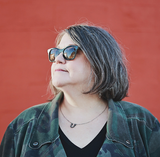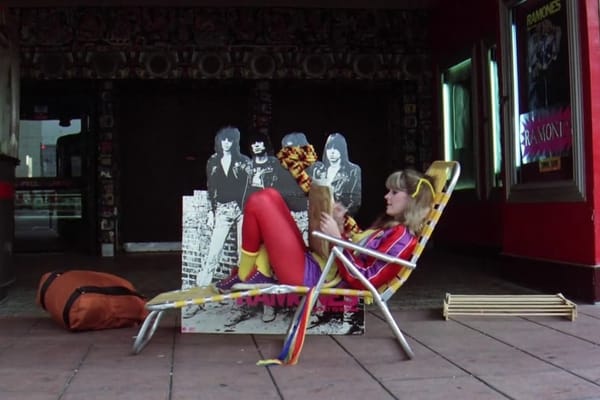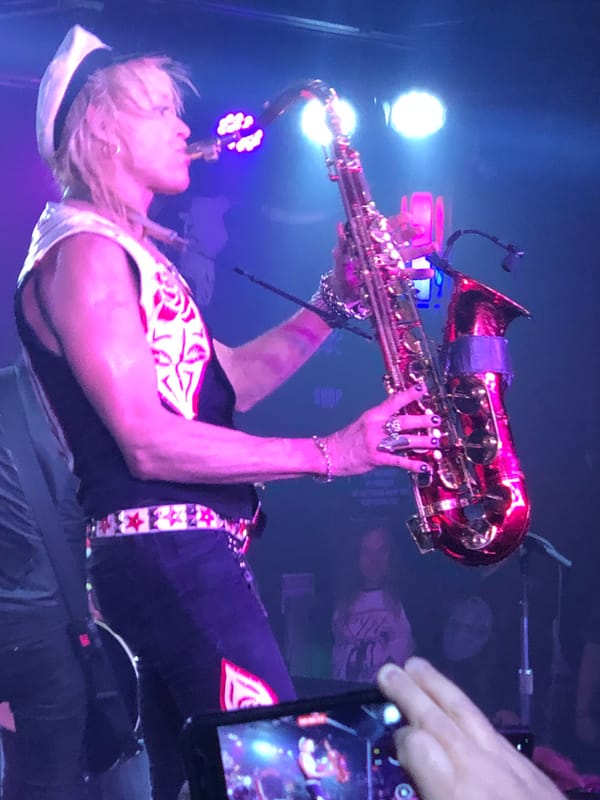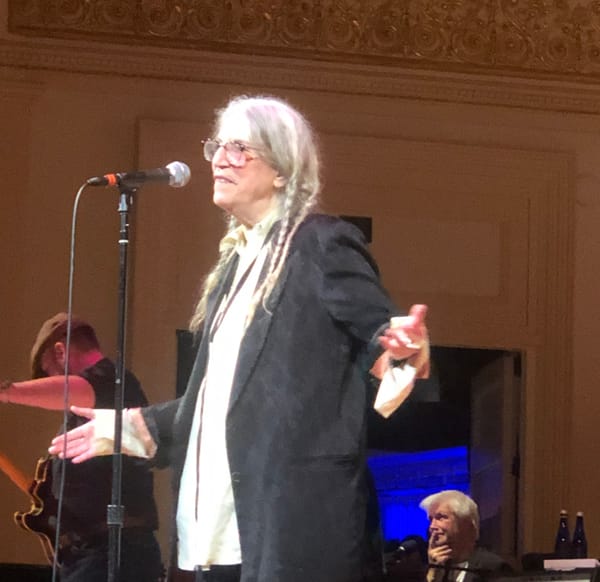PJ Harvey: I Inside The Old Year Dying
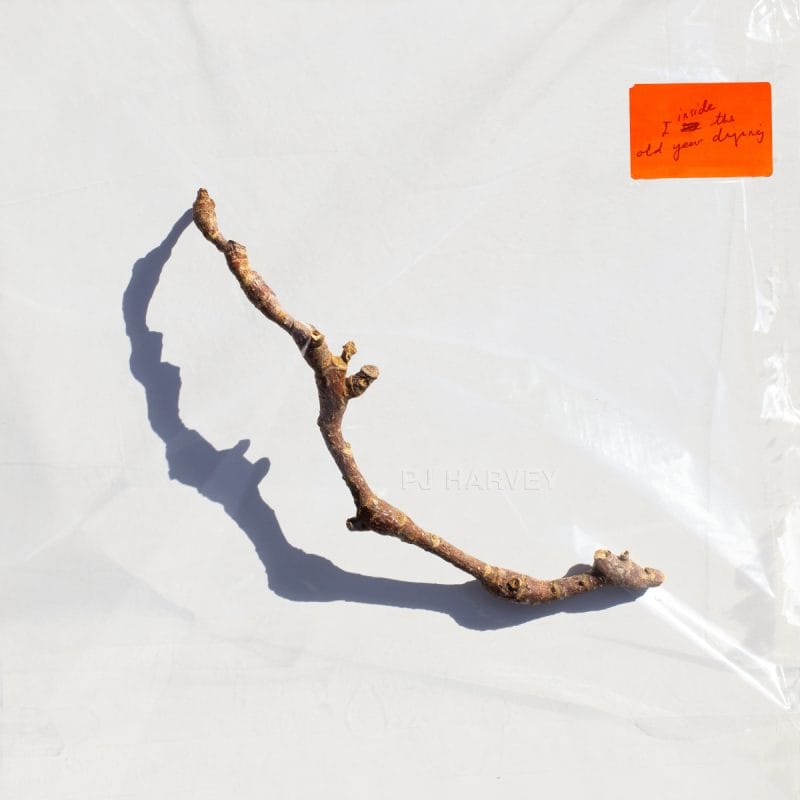
PJ Harvey opens her new album, I Inside The Old Year Dying, with “Prayer at the Gate,” a song that sounds like sunset and feels like vesper flights. Her voice is both spectral and muscular, and will lodge itself in a corner of your brain to swoop in and out hours or days later. The title tells you it’s a prayer but there is no way this melody and series of words could be anything else. Harvey propels her voice to create urgency -- this may be a prayer, but it’s not meant to be a polite entreaty. She uses a wordless melodic refrain between each verse that maintains the pace and a forward movement, like a walking meditation: it’s connective tissue but it’s not static, she is still there, she is still petitioning.
To observe that a new PJ Harvey album is drastically different than the ones that preceded it feels pointless, because Polly Jean has been doing that since 1992’s Dry, the record that kicked in doors and imploded buildings. Her back catalog is a succession of fully formed sounds and words and thoughts and notes, never tentative, always complete worlds. She took her listeners from proto grunge and a million Patti Smith comparisons to a dalliance with murder ballads, zigging into a meat-and-potatoes rock and roll performance that was one of the best New York City albums ever made, zagged over to pulling fairies out from under ancient plinths before publicly workshopping a record that addressed Davos and the WTO. Every single one was an event – and this is not a complete list. But you never listened to any new PJ Harvey record and thought that it didn’t sound like her, and that’s still the case in 2023.
I Inside The Old Year Dying is PJ Harvey’s tenth record, and her first album of new music since 2016’s The Hope Six Demolition Project. In the interim she’s directed an effort around repackaging her previous work, curating and adding demos and b-sides, but she hadn’t written any new music and was initially concerned that she couldn’t or didn’t want to do that any more: “OK, I’ve done this for a long time. Do I want to carry on for the remainder of my life doing the same thing?” It’s a big question that Harvey decided to answer by going back to the source: the music that she loved, that inspired her: “No, it’s still there; I still love this so much that it’s like it keeps me alive.”
Harvey’s voice is the focus on this record because she is singing with a different kind of intention and energy and that varies from track to track; it’s not so much the cliched “out of her comfort zone” rather than a deliberate attempt to create something new. It’s further emphasized by a minimalist instrumentation that includes a lot of field sounds, like wind and children playing and power lines buzzing. Harvey is always precise on record even when she’s been full of fury and abandon; you can hear the exactness on those early records like Dry or Rid of Me and it always felt like it was Harvey instituting very necessary guardrails to keep the energy exactly where she wanted it to be. On I Inside… it feels like she has opened the gate and sprinted onto a field and is gleefully letting her voice echo off the hillsides. It’s not that PJ Harvey’s voice has ever been anything but a force of nature, but that here she has somehow managed to find yet another way to utilize it in service of the work.
The lyrical basis for the songs on I Inside… are 12 poems she selected from her 2022 poetry collection, Orlam, and in doing so, she decided on a setting that was more abstract than Hope Six and more fantastical than Let England Shake, the two albums of original material that preceded this one. In Orlam, she wrote in a local dialect she recalled from her childhood, and so she sings in dialect as well. There’s a glossary helpfully included at the bottom of the album’s lyric sheets -- “eth” is earth, “twanketen” is melancholy, “zweal” is to scorch -- and while it’s interesting, it’s not necessary in order to step into the world Harvey -- along with her constant creative partners John Parish and Flood -- have created in the 12 songs that comprise this new release.
“Noiseless Noise” is anything but; it begins quietly but soon transitions to become gloriously loud and discordant, there is heat and gravel and smoke and boundless elasticity in Harvey’s vocals. “A Child’s Question, July” is an insistent list of queries -- John Parish chanting “ask the hedge what it knows” -- and Harvey in a quavering voice vocalizing each request. There’s innocence but there’s also an edge of danger -- don’t ask questions you don’t want the answers to and don’t ask questions of forces you don’t want to answer to. “A Child’s Question, August” is the soothing counterpoint, an ode to the end of the summer -- her voice sounds ripe and ready to rest. If you’re worried that this record is going to be too topically esoteric for you, you may feel better to learn that Elvis himself makes an appearance in the story -- and that’s Presley, not Costello, as she quotes from “Are You Lonesome Tonight?” and also “Love Me Tender.” It is Elvis as an archetype, as Wyman-Elvis which means “all-wise warrior.” She also references Joan of Arc, Shakespeare, Keats, and Coleridge, but Harvey’s touchstones have always been wide-ranging.
The press release for the album quotes her as saying both “I don’t feel I’ve ever sung as well as I’ve sung on this record” as well as “Any time I seemed to be singing in what they would call my PJ Harvey voice, it was vetoed.” Harvey told Guardian journalist Laura Snapes that this referred to “a particular way of projecting my voice1” and that “Flood would stop me straight away if he heard me singing in a way I’d sung before.” She also insists that she doesn’t recognize the voice she uses on “Prayer at the Gate,” when it literally could not be anyone else. It’s a good reminder of how artists do not see or hear themselves as the listener does.
This is such a modern sounding record despite its anchors in ancient words and timeless stories. The title track, for example, juxtaposes the tiniest bit of distortion around Harvey’s voice, the music providing chunky atonality and contrasting notes for texture between each line which is reminiscent of Bowie in his Berlin phase (or U2 in their Achtung era, which are kissing cousins) but also conjures a mood and an image of (perhaps) Wyman-Elvis dancing adjacent to an ancient standing stone somewhere at moonrise on the summer solstice, “Battle of Evermore” echoing somewhere in the distance. “I Inside The Old Year Dying” is also an interesting title to contemplate when you consider Harvey’s assertion that she doesn’t recognize herself; there was an element or elements that she was happy to deliberately abandon. If anything it sounds like relief and gratitude, but -- and maybe this is the logical outcome when you haven’t made new music in seven years and spend a focused time digging into the corners of your back catalog -- you are very aware of what has come before and want to make sure you aren’t doing it again. That aligns with a central tenet of PJ Harvey’s career, the dogged insistence of not just doing what worked before.
But it also feels like Harvey was inspired by her work assembling the demos and outtakes from her back catalog, because there’s a sense of the kind of openness of demos or scratch vocals when you’re not worrying about getting it 110% right, you’re just trying to sketch it out to build on it, develop it, remember it. There’s an essentialism to that approach which permeates this album, and that’s not inherently good or bad. But if you are trying to find your way back into your art and your process, being willing to get music on tape is the necessary first step back on that path..
PJ Harvey may feel different, she may feel restored, she may feel liberated. But those have always been aspects that could be found on any PJ Harvey record. On I Inside The Old Year Dying you hear growth, you hear life’s passage, you hear rest, you hear 10,000 hours. You hear an artist who has worked and labored and focused. You hear an artist at home in the studio and comfortable with her work. You hear gratitude that she was able to rediscover her love for this form again. Most likely, though, you’ll hear the same thing you could always hear on a PJ Harvey album: freedom.
‘Am I still any good? Have I still got it?’: PJ Harvey on doubt, desire and deepest, darkest Dorset
There Goes My Miracle: On Springsteen's "Western Stars"
Caryn Rose • Jul 1, 2019

Western Stars is a triumph. It is full of big sky, red rocks, brown and sage and ochre and copper, goddamn purple mountains majesty. As someone who has been anxious to hear this record from the first time we heard about it (producer Ron Aniello mistakenly mentioned it in an interview, which is where the whole “Copland-esqe” rumor came from), it does not…
Read full story → ↩
